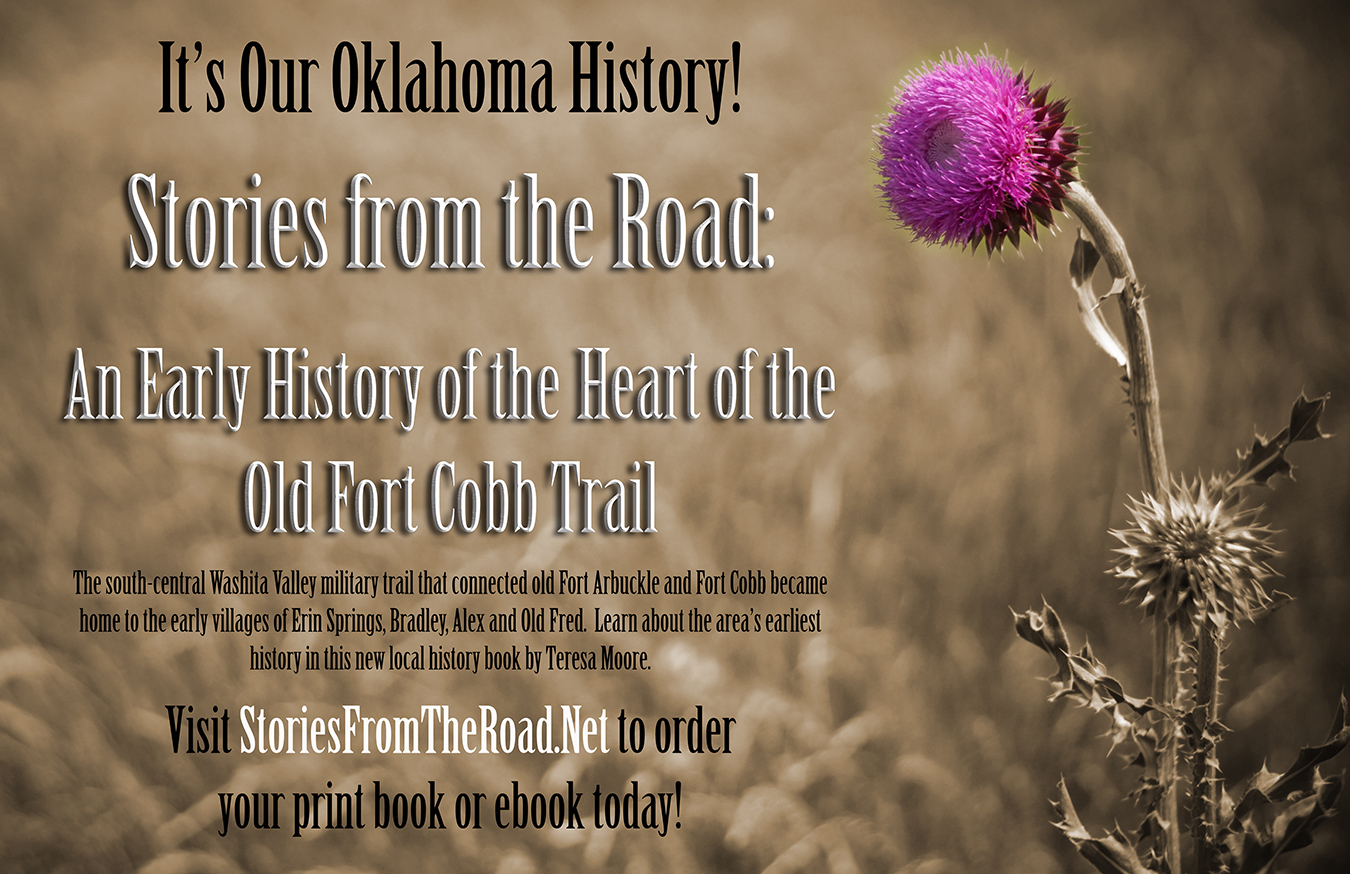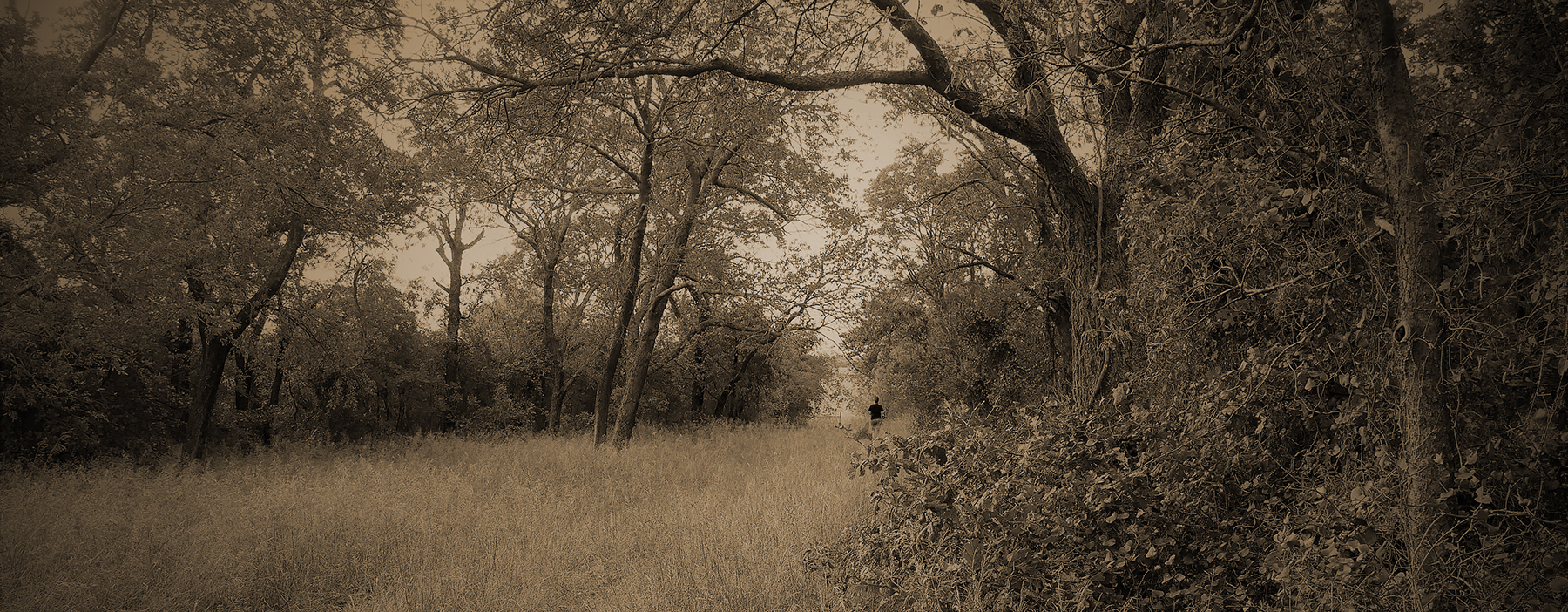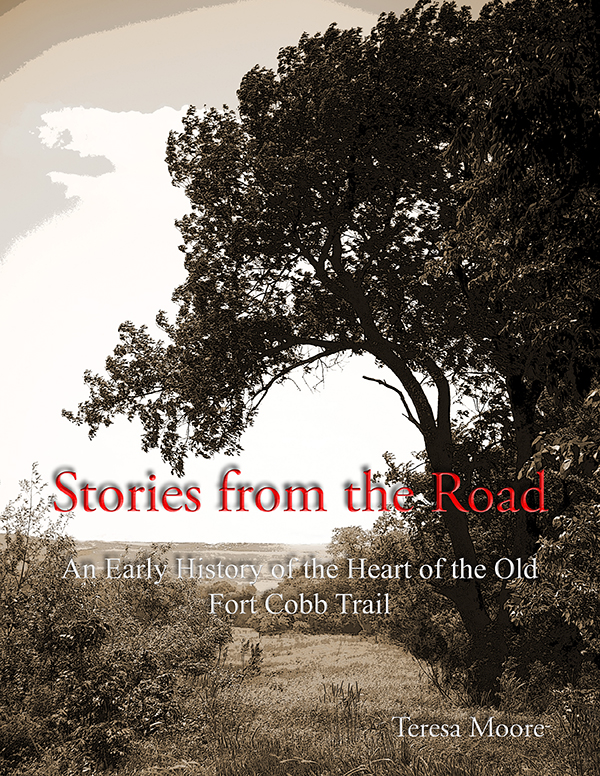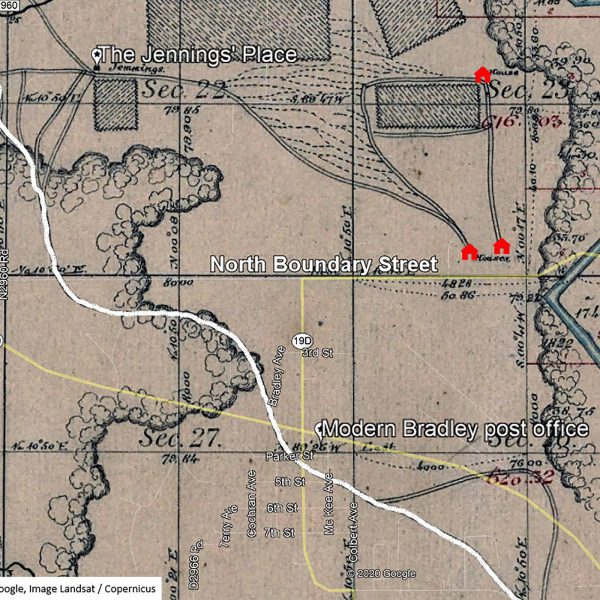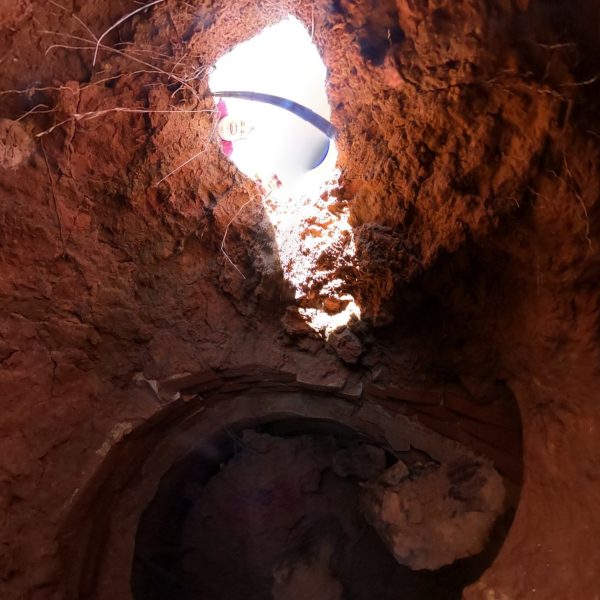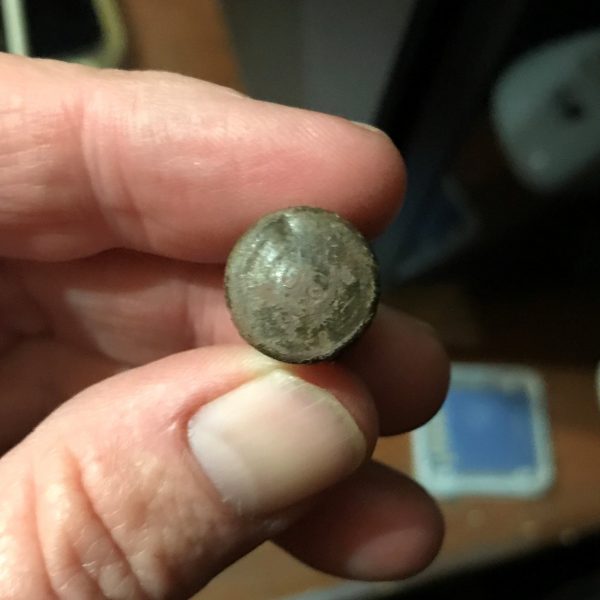Book Events
There are no Stories from the Road events scheduled at present. Email the author to schedule an event.
Explore the Trail...
Maps
"Stories from the Road" recounts the earliest history of the old Fort Cobb Trail. A computerized mapping technique known as geo-referencing was used to manipulate and study early land surveys done along the route of the trail. This produced never before seen maps showing in great detail the locations of the first civilian settlements in the area. These developed as early as the late 1860s along the heart of the military road's 100-mile route.
Murders
Calculated keywords were used to search historical computer databases only recently available to the public. These returned the stories of those first settlers who lived, loved, died...and yes, sometimes murdered and robbed...along a 20-mile stretch of road at the heart of the old Fort Cobb Trail. The application of high-tech research techniques to a decidedly low-tech era provided a wealth of previously unknown stories told straight from the road.
Musings
What was life like at the heart of the ancient south-central Washita Valley during the golden age of old Indian Territory? Who were the first settlers and how did they come to make their homes in that valley? What role did they and the area play in the history of Oklahoma? In pondering these questions, "Stories from the Road" joins the many voices of the old valley for the first time into one.
Sample the Book and its Sources
LISTEN
A few of the characters...
Key early dates...
Some Thoughts about Stories from the Road…
“From its beautiful cover to its flowing story, laid out precisely with the reader in mind, ‘Stories From the Road’ will keep you engaged in the unfolding history of Oklahoma’s ‘Heart of the Old Fort Cobb Trail.’ Teresa Moore offers her readers a soulful, as well as factual insight, into life along the Trail. Excellently resourced, the book walks each reader down a path to unexpected discoveries. Family names and long forgotten ranches jump to life. Maps, illustrations, photographs, news articles and court documents keep readers involved. Local historians and genealogists, as well as any readers interested in Oklahoma’s fascinating history, will enjoy this book. Life along the old Fort Cobb Trail was rough and tumble, but heartfully vibrant, and ‘Stories From the Road: An Early History of the Heart of the Old Fort Cobb Trail’ tells it all.” Shirley, Alex, Oklahoma
“Your book made it all the way to South Carolina. I graduated from Chickasha High School in ’58. The book is a wonderful work on the early history of the area.” Don, Pauline, South Carolina
“I have read Stories From the Road page by page and word for word. I found the book to be extensively researched and verified by the author herself, first hand when possible. I grew up along the Erin Springs military road, graduated from Bradley High School and earned my degree from East Central State University. The information in Stories from the Road about Erin Springs and Lindsay is compelling and the story of Bradley is good and accurate. The information on Alex and Moncrief’s Crossing near Ninnekah is important. I appreciate the work done on this book and will now go drive once again the old roads of my youth, experiencing them once again with even more insight into the area known as the Fort Cobb Trail.” Sammy, Rush Springs, Oklahoma
“My favorite parts of the book are the gunfights and shenanigans. On a deeper level, though, the book absolutely made me look differently at the surrounding countryside. The geo-referencing made me think about fields I have both walked and plowed. Now I wonder whose front porch or yard I visited from 120 or so years ago. Our local history is a wonderful pursuit and I hope it is never lost.” Mark, Alex, Oklahoma
“…Caused me to re-think this country we live in.” Lois, Ninnekah, Oklahoma
“Esoteric…” Randy, Chickasha, Oklahoma
“Geo-referencing aside, I believe this book has the potential to become one of the most important sources of historical information regarding this area of Oklahoma available to future generations of students of history. The succinct, competently crafted accounts not only of the Ft. Cobb trail but the activities of that day and time are valuable to understanding the era. Any true student of history is going to love this book. There’s no telling how many works of fiction could come of this information.” Mel, Pauls Valley, Oklahoma
“I have had a passion for local history most of my life and tried to share this with my students during my many years of teaching school at Alex, Oklahoma. I was happy to find that one of my students shared this passion and now she has written a book about our local history. Her hours of research, writing and revisions have brought to light many compelling, never before known and often humorous stories of our home and other areas along the Fort Cobb Trail.” Faye, Alex, Oklahoma
“When we study history, we often are drawn to the stories of larger cities or grand events. We seldom give thought to the hidden stories of the local people and places around us. Ms. Moore has unearthed these hidden gems from the south-central Washita Valley; reminding us of those that have gone before, the difficulties they faced, and the obstacles they overcame to make these towns that have endured. Her book is a treasure, especially to those of us whose roots began near the old Ft. Cobb Trail.” Jan, Oklahoma
